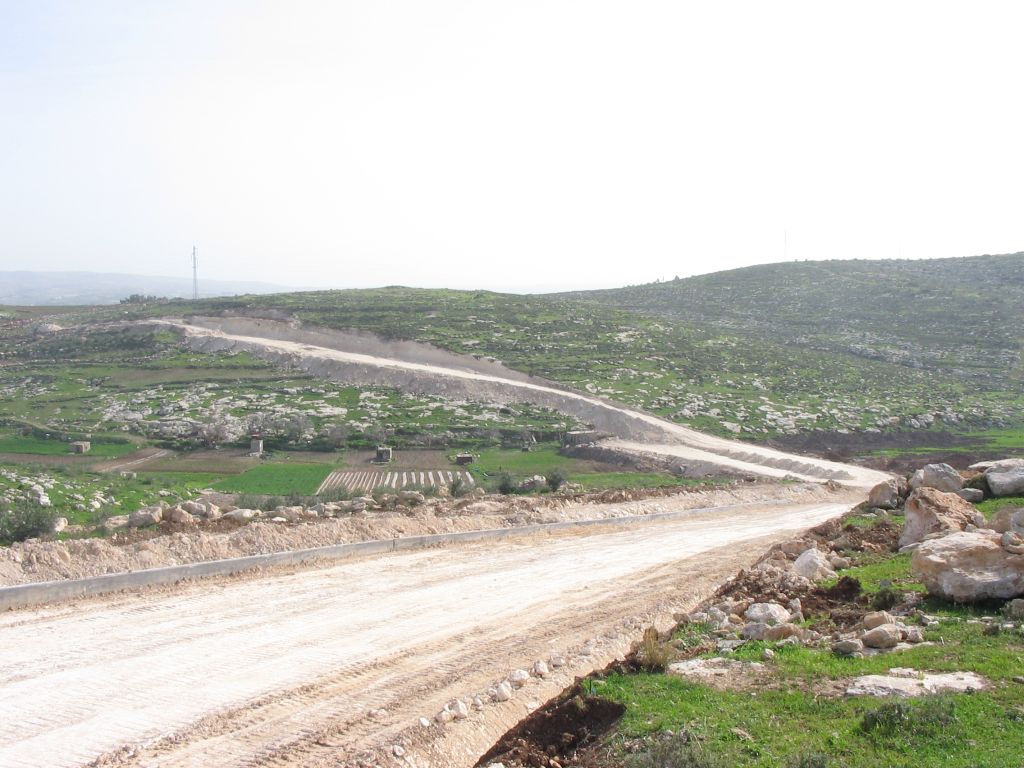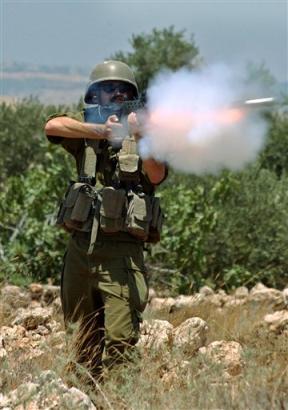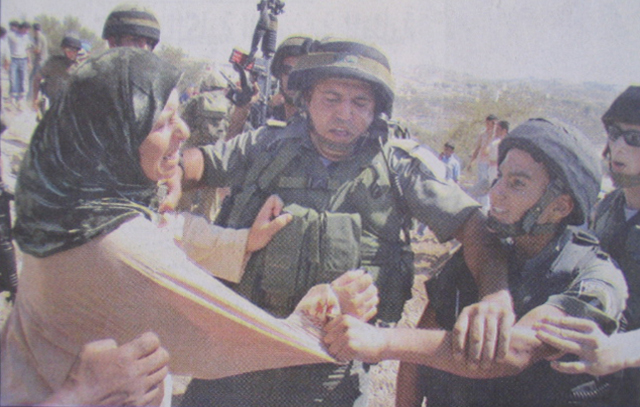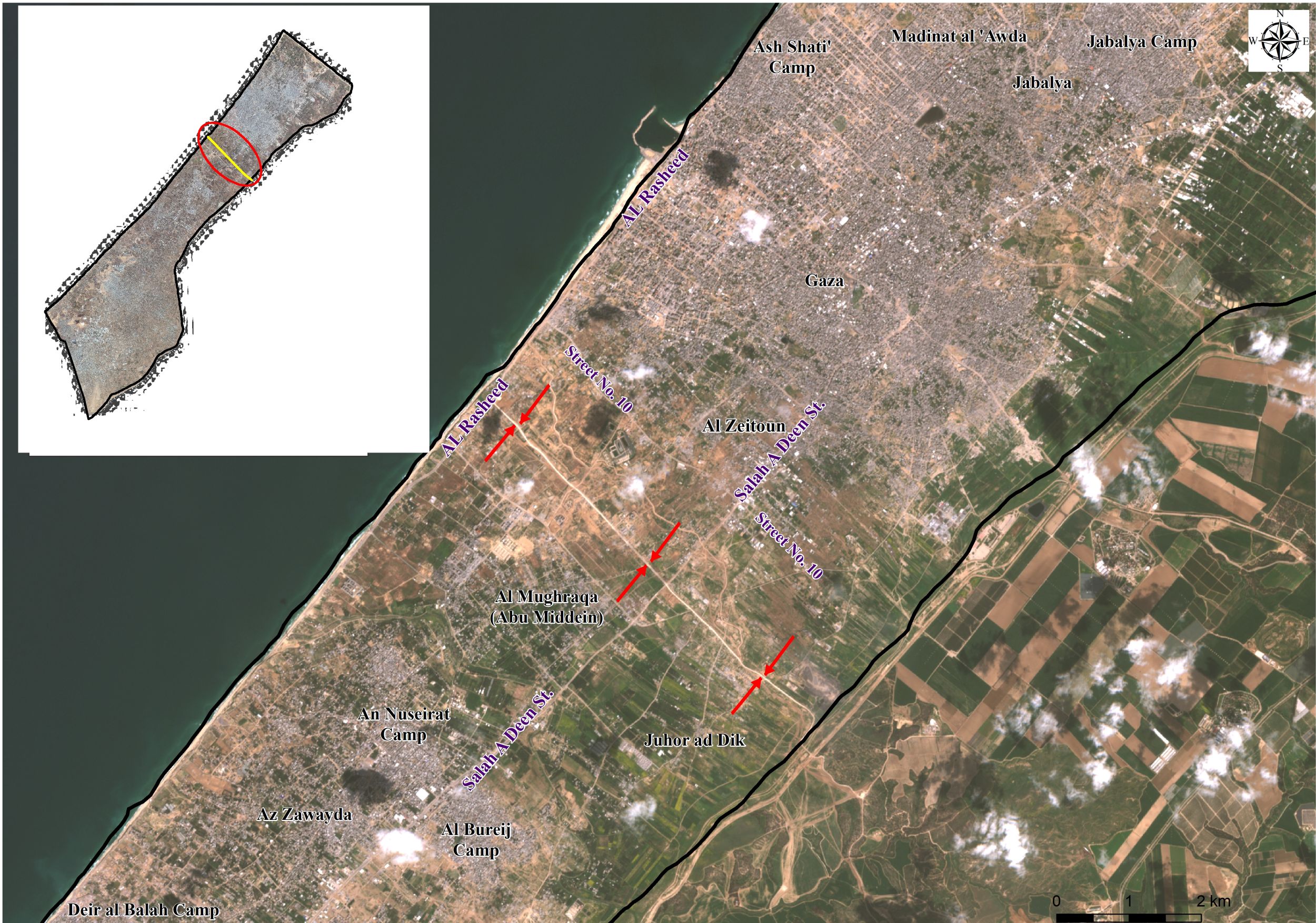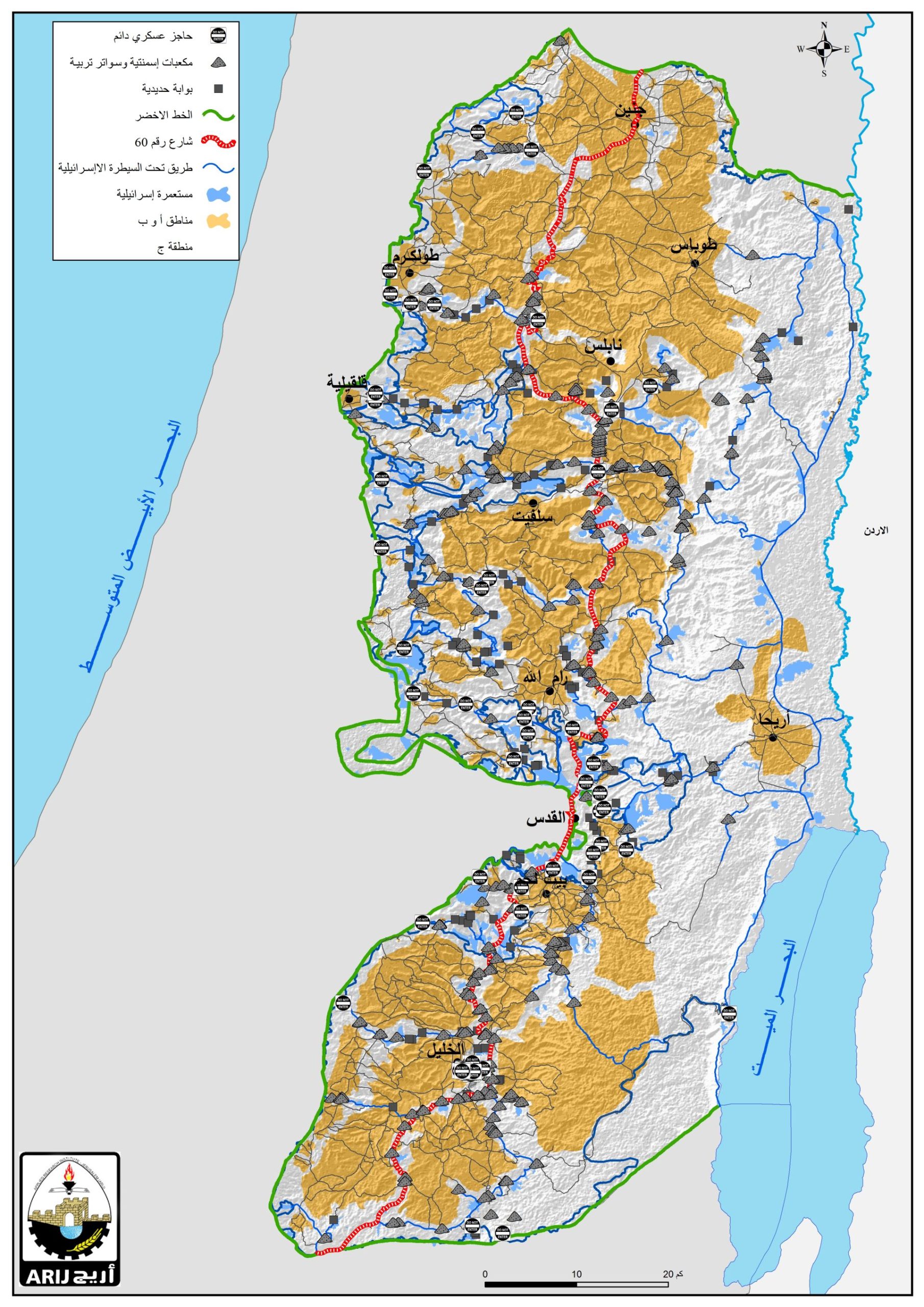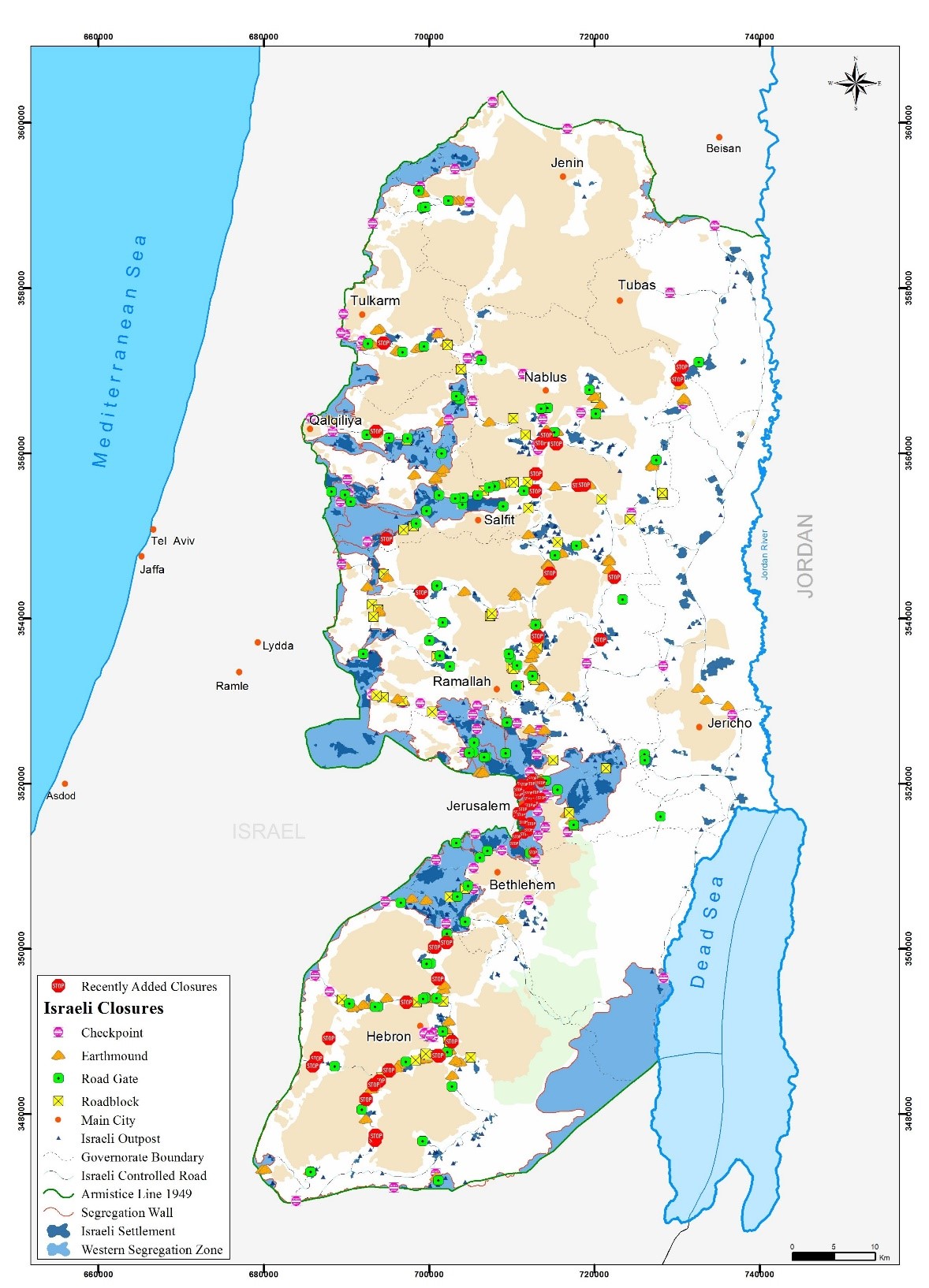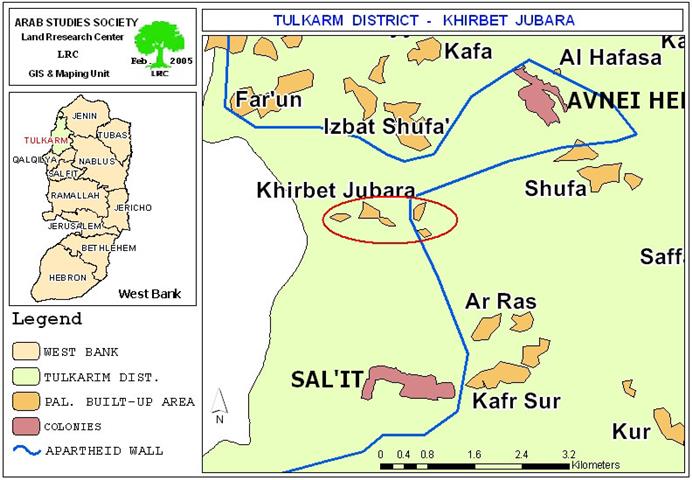Location, population and area
The town of Idhna is located 12 km to the north west of the city of Hebron. It has the biggest population (About 20.000 inhabitants) among 20 front line towns and villages to the west of Hebron.

(Map 1- Location of Idhna town)
Before 1948, the total area of lands affiliated to the village was about 36000 dunums. In 1952, the Israeli occupation forces confiscated 17000 dunums from Idhna lands under the pretext of remarking borders and protecting Israel. In 1972, another 10000 dunums from Idhna's most fertile lands were declared as a closed military zone. The aforementioned confiscated lands are all located to the west of the town. The remaining 9000 dunums serve as the Village's built up, agricultural and industrial areas.
The lost of fertile plateaus and dozens of surface springs to the west of the town after the 1948 war forced Idhan citizens to move to hilly areas eastward and start cultivating them. Now, the town is famous for olive groves grown in this hilly area.
The Wall – A new tool for land confiscation
The remaining 9000 dunums of Adhna town are now threatened with the construction of the Segregation Wall. So far, almost 2000 dunums have been confiscated or separated by the Wall as it goes at an average depth of 400 meters inside Idhna lands, to the eastern side of the green line and travels at a length of 5000 meters. The Israelis have issued no new land confiscation orders since they consider the targeted lands where the Wall is being built as part of the already announced military zone.
(Photo 1- Idhna- Hebron: A filed of olive grove after devastation)
(Photo courtesy of LRC)
The devastation of these agricultural lands by the Israeli bulldozers has led to the uprooting of at least 1500 olive and almond trees, according to the public relations officer at Idhan municipality, Mr. Abdul Rahman Tumaizi.
In an interview conducted by LRC filed worker with Mr. Tumaizi, he said that 'the Israeli bulldozers are working round the clock to destroy Palestinian lands in the area under heavy army and police protection'. 'Affected farmers and land owners are not allowed to approach the scene of devastation', he added.
(Photo 2- Idhna- Hebron: part of the under construction Wall path)
(Photo courtesy of LRC)
Among the victimized farmers, the following were known: Mr. Zhiab Jiyawee, Mr. Mahmud Abdel Qader Abu Zalata, Mr. Ahmad Ibrahim Faraj Allah, Mr. Ahamd Ali Jiyawee, Mr. Mahmud Shehada Jiyawee, Mr. Abdel Mun'im Jiyawee, Mr. Ahamd Isma'il Tumaizi and Mr. Abdulah Abu As'ad.
On the other hand, the Israeli occupation forces took control over a number of artisan wells in the area and separated them from their owners. Amongst those affected are Mr. Abdul Mun'im, Jiyawee, his brother Mr. Mahmud Jiywee, Mr. Na'im Mohammed Isleimiya.
House attacks
Eyewitnesses from Adhna informed LRC field worker that since the commence of work last December the Israeli army has been raiding Palestinian houses and barracks located in the vicinity of the Wall path, destroying contents and beating residents in an attempt to force them out of the area. Army checkpoints have been repeatedly set up to stop movement in and out of the area.
Anti wall actions
A series of protests, marches and sit INS were staged in protest against the construction of the Wall in Adhna. Local people and foreign supporters took part in these activities which were confronted with the use of force on the part of Israeli army and police. During the clashes, many people were wounded with live, rubber and metal bullets. Others suffered suffocation from tear gas or bruises as a result of beatings with sticks.
Photo 3- An Israeli soldier firing tear gas bomb during anti Wall protests.
Photo 4: A Palestinian women clashes with Israeli soldiers during anti Wall protest
(Photo courtesy of LRC)
Affected farmers and land owners have objected the path of the Wall to the Israeli Military Objections Committee in Beit Eil, yet, no avail. The objection was presented by lawyer Shlomo Lacker , who works for the Palestinian Land Defense Committee.
Prepared by
The Land Research Center
LRC




